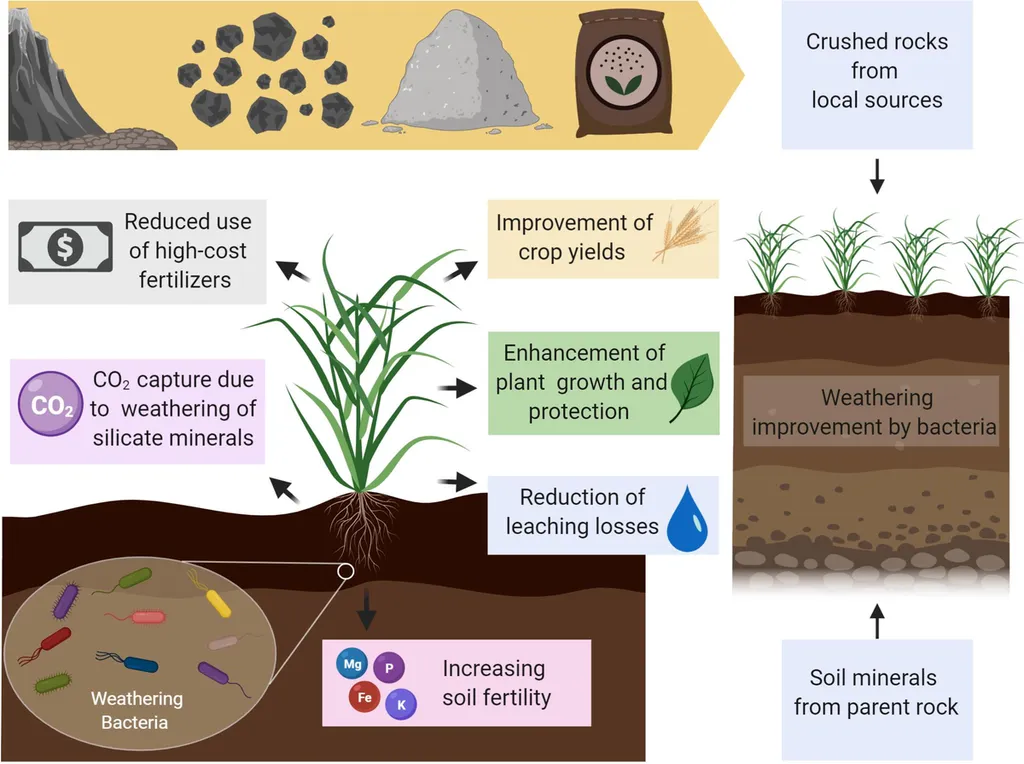In the relentless battle against plant diseases, a new ally has emerged from the soil, offering a sustainable and eco-friendly solution to some of the most destructive pathogens threatening global agriculture. Researchers have discovered that a compound derived from a soil bacterium, Streptomyces sp. JCK-8368, can induce resistance in plants, effectively controlling tomato bacterial wilt and apple fire blight. This breakthrough, published in the journal ‘Frontiers in Plant Science’ (translated as ‘Plant Science Frontiers’), could revolutionize the way we protect our crops, reducing reliance on conventional antibiotics and copper-based pesticides.
The study, led by Loan Thi Thanh Nguyen of the Plant Healthcare Research Institute at JAN153 Biotech Incorporated in Jeongeup, Republic of Korea, focuses on the biocontrol potential of azomycin, a compound produced by the Streptomyces sp. JCK-8368 bacterium. The research team found that applying the culture filtrate of JCK-8368, containing azomycin, significantly reduced the severity of tomato bacterial wilt and apple fire blight in treated plants.
“Our findings demonstrate that low concentrations of JCK-8368 and purified azomycin can effectively control these devastating diseases through induced resistance,” said Nguyen. The study revealed that foliar spraying and soil drenching with the culture filtrate led to a notable reduction in disease severity, with control efficacies ranging from 11.11% to 90.00% depending on the application method and dilution rate. Purified azomycin showed a clear dose-dependent effect, with the most effective concentration being 100 ng/mL, achieving a 57.14% control efficacy against tomato bacterial wilt.
The research also uncovered that plants treated with the culture filtrate and azomycin upregulated defense-related genes such as PR1, PR2, PR3, and PR5. This suggests that the induced resistance involves systemically acquired resistance and pathogenesis-related defense pathways, providing a robust defense mechanism against the pathogens.
The implications of this research for the agricultural sector are substantial. As the global population continues to grow, the demand for food production increases, making it crucial to develop sustainable and effective methods for crop protection. The use of azomycin-producing Streptomyces sp. JCK-8368 offers a promising alternative to chemical pesticides, which can have harmful environmental impacts and contribute to pathogen resistance.
“This is the first report demonstrating the application of azomycin against plant bacterial diseases,” Nguyen emphasized. The study’s findings pave the way for further field validation and formulation development, potentially leading to the commercialization of azomycin-based biocontrol agents. Such innovations could significantly enhance agricultural productivity while promoting environmental sustainability.
As the world grapples with the challenges of climate change and food security, the discovery of azomycin’s biocontrol potential represents a beacon of hope. By harnessing the power of natural compounds like azomycin, we can safeguard our crops, protect our environment, and secure a sustainable future for global agriculture. The journey from lab to field is long, but the potential benefits make it a journey worth taking.

